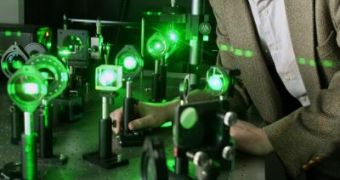Experts at the Princeton University Engineering School are currently working on a new method of “reading” light, one that could bring about massive changes in the way people take photographs, as well as in the way doctors look at patients' blood or tissue samples. Basically, the new system will allow for observing details anywhere in the picture, without having to sacrifice the wideness of the field of view, a swap all those who take photographs are accustomed to.
“It allows you to take a closer look at an object without narrowing your field of view,” Princeton Assistant Professor of Electrical Engineering Jason Fleischer, the leader of the current research, explained. Other contributors to the study include graduate students Christopher Barsi and Wenjie Wan, and a paper detailing the find appeared as a cover story in the April issue of the journal Nature Photonics.
Human and animal eyes, as well as camera sensors, are limited in their functionality by the amount and type of light radiation that penetrates to them. For instance, in humans, not all wavelengths make it through the eye and reach the retina, which means that a large part of the information coming from an item is lost. This is especially true when observing objects or creatures smaller in size than the wavelength of a certain color in the light spectrum.
For instance, the green color has a wavelength of 530 nanometers, which means that the things that are smaller than this size cannot be easily seen by dedicated observers. “In effect, these devices suffer from 'tunnel vision,'” Fleischer said. So, the expert has turned to nonlinear optical materials, a class of items that has very unusual chemical and physical properties, in that they do not just allow light through, but force wavelengths to intertwine while passing through them.
This is very important, because information stored on a certain wavelength, which would otherwise remain hidden from the view, can “hitch a ride” on another wavelength, which can be detected by observers. Unfortunately, the large number of distortions that appear with this technique does not allow for it to be directly used in cameras and microscope diagnostics, but the experts are currently working on a computer software that will be able to decipher the images and then faithfully recreate them to the smallest detail.
“In such an image, all parts of the scene will be 'zoomed in' at the same time. The new method could help you see with much better precision, but with a light the cell actually likes,” Fleischer concluded in speaking about the fact that nonlinear optical materials could allow biologists to observe certain types of bacteria or other microorganisms in types of lights the creatures were not sensible to.

 14 DAY TRIAL //
14 DAY TRIAL //